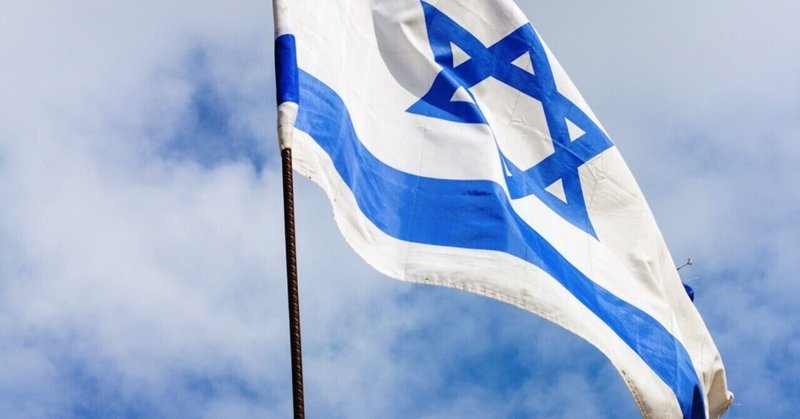
機能的な卵黄嚢
Your Functional ''Yolk Sac''
機能的な卵黄嚢
by Frank Sherwin, D.Sc. (Hon.) | Sep. 11, 2023
For decades, evolutionists pointed to dozens of ‘useless artifacts’ of the human body to make their questionable case for evolution.
何十年もの間、進化論者たちは人体の何十もの「役に立たない機能」を取り上げて、進化論に疑問を呈してきました。
But the creation worldview states that God doesn’t make any junk. Therefore, when evolutionists proclaim tissue or structures in our body are useless,1,2 one can count on methodical investigation and research to ultimately reveal a God-given function.
しかし、創造論の視点では、神はガラクタを作らないとされています。従って、進化論者が私たちの身体の一部の組織や器官が役に立たないとする主張に対しては、最終的に神から与えられた機能を明らかにするために、系統的な理路整然とした調査と研究に頼ることができます。
Evolutionary relics in the human body that were once thought to be useless include the gill slits, tail, and yolk sac. They appear during our embryonic development at about the one-month stage. Scientific research has since found that two (the yolk sac and gill slits) of these three structures have critical functions and are therefore not purposeless. Even our “tail”—the base of the spine called the coccyx—provides attachment for muscles involved in the defecation process.
かつては役に立たないと考えられていた人体の進化の遺物には、鰓裂、尾、卵黄嚢などがあります。これらは私たちの胚発生の過程で、およそ1ヶ月の段階で出現します。その後、科学的研究により、これら3つの構造のうち2つ(卵黄嚢と鰓裂)には重要な機能があり、したがって無目的ではないことが判明しています。さらに、「尾」(尾骨と呼ばれる背骨の付け根)には、排便に関わる筋肉が付着しています。
Our “gill slits” (pharyngeal throat pouches) are critical,3 “The first pair of pharyngeal pouches become the auditory cavities of the middle ear and the associated eustachian tubes. The second pair of pouches gives rise to the walls of the tonsils.”4 The parathyroid and thymus glands—which are essential for life—come from the third and fourth.
私たちの 「鰓裂」(咽頭喉頭嚢)は非常に重要です。第1対の咽頭嚢は、中耳の聴覚腔とそれに付随する耳管となります。第二対の嚢は扁桃腺の壁を形成します。生命維持に不可欠な副甲状腺と胸腺は、この3番目と4番目にあります。
Recently, details regarding the critical function of our “yolk sac” have been published in Science magazine by 61 life scientists:
最近、私たちの「卵黄嚢」の重要な機能に関する詳細が、61人の生命科学者によってサイエンス誌に発表されました:
The yolk sac (YS) generates the first blood and immune cells and provides nutritional and metabolic support to the developing embryo. Our current understanding of its functions derives from pivotal studies in model systems, and insights from human studies are limited. Single-cell genomics technologies have facilitated the interrogation of human developmental tissues at [an] unprecedented resolution. Atlases of blood and immune cells from multiple organs have been greatly enhanced by focused, time-resolved analyses of specific tissues.5
「卵黄嚢(YS)は最初の血液細胞と免疫細胞を生み出し、発育中の胚に栄養と代謝をサポートします。卵黄嚢の機能に関する我々の現在の理解は、モデル系における重要な研究から得られたものであり、ヒトの研究から得られた知見は限られています。単細胞ゲノミクス技術によって、ヒトの発生組織をこれまでにない分解能で調べることが容易になりました。複数の器官に由来する血液細胞や免疫細胞のアトラスは、特定の組織に焦点を絞った時間分解解析によって大幅に向上しています。」
The same authors also stated in their paper, “Our findings revealed YS contributions to metabolic and nutritional support and to early hematopoiesis [the formation and development of blood cellular components].”5
また、同著者らは論文の中で、「我々の発見は、YSが代謝と栄養のサポート、および初期の造血(血液細胞成分の形成と発達)に貢献していることを明らかにしました」とも述べています。
Such functions hardly sound like vestiges of evolution! Indeed, Gary Parker, using a creation science worldview, described one of the functions of the yolk sac in the first edition (1980) of his book:
このような機能は、進化の名残とはとても思えません!実際、Gary Parkerは創造科学の世界観を用い、彼の著書の初版(1980年)で卵黄嚢の機能のひとつを次のように説明しています:
You need blood in order to form the bone marrow that later on is going to form blood. So, where do you get the blood first? Why not use a structure similar to the yolk sac in chickens? The DNA and protein for making it are “common stock” building materials. Since it lies conveniently outside the embryo, it can easily be discarded after it has served its temporary—but vital—function. Notice, this is exactly what we would expect as evidence of good creative design and engineering practice.6
「後に血液を作る骨髄を形成するためには血液が必要です。では、まずどこから血液を得るのでしょうか?ニワトリの卵黄嚢のような構造を使えばいいのではないでしょうか?血液を作るためのDNAとタンパク質は "ありふれた "材料です。胚の外側にあるため、一時的ではあるが重要な機能を果たした後は簡単に捨てることができます。これこそ、私たちが創造的なデザインと工学の優れた実践の証拠として期待することなのです。」
ICR’s Randy Guliuzza, M.D., describes this important structure in more detail:
ICR の Randy Guliuzza 医学博士は、この重要な構造について詳しく次のように説明しています:
The embryo makes RBCs first, his most necessary blood component. These distinctive cells are made by the inner lining of blood vessels in a temporary structure outside the embryo called the yolk sac, which in people is actually a "blood forming sac" that never contains yolk. This misguided name was given because it was believed to have "arisen" in a pre-human animal ancestor and because it initially contains a yellow substance.
「胚はまず、最も必要な血液成分である赤血球を作ります。この特徴的な細胞は、胚の外側にある卵黄嚢と呼ばれる一時的な構造の中で、血管内壁によって作られます。人間の場合、卵黄嚢は実際には卵黄を決して含まない「造血嚢」です。この誤った名称は、卵黄嚢がヒト以前の動物の祖先の中で「発生した」と信じられていたことと、卵黄嚢が当初は黄色い物質を含んでいたことから付けられました。
The progenitor RBCs eventually migrate from the yolk sac to the liver and spleen, which become the lead cell-forming sites by the mid-second month of gestation.7
赤血球前駆細胞は最終的に卵黄嚢から肝臓および脾臓に移動し、妊娠 2 か月半ばまでにこれらが主要な細胞形成部位になります。
Unfortunately, despite excellent research to the contrary, evolutionists continue to use the tired and outdated name of yolk sac. It’s time to rename this marvelous structure. It reflects multiple critical functions that we all depended on during our intrauterine development. Since the human yolk sac contains no yolk, but rather has blood components and hematopoietic growth factors, perhaps it should be called the blood-forming sac?
残念なことに、それとは反対の優れた研究にもかかわらず、進化論者は使い古された時代遅れの卵黄嚢という名称を使い続けているのです。今こそ、この驚異的な構造の名称を変更する時です。それは、私たちが子宮内発育中に依存していた複数の重要な機能を反映しています。ヒトの卵黄嚢は卵黄を含まず、血液成分と造血成長因子を含んでいるのですから、おそらく造血嚢と呼ぶべきでしょう。
Clearly, the psalmist was right in declaring, “I will praise thee; for I am fearfully and wonderfully made: marvellous are thy works; and that my soul knoweth right well.”8
参考聖句
詩篇139:13~14
13 それはあなたが私の内臓を造り、母の胎のうちで私を組み立てられたからです。
14 私は感謝します。あなたは私に、奇しいことをなさって恐ろしいほどです。私のたましいは、それをよく知っています。
ICR
https://www.icr.org/articles/type/9
この記事が気に入ったらサポートをしてみませんか?
